- Our Content
- Success Stories
- Schedule A Demo
- Login / Register

Assessments In Physical Education
- Doug Curtin
- July 14, 2022
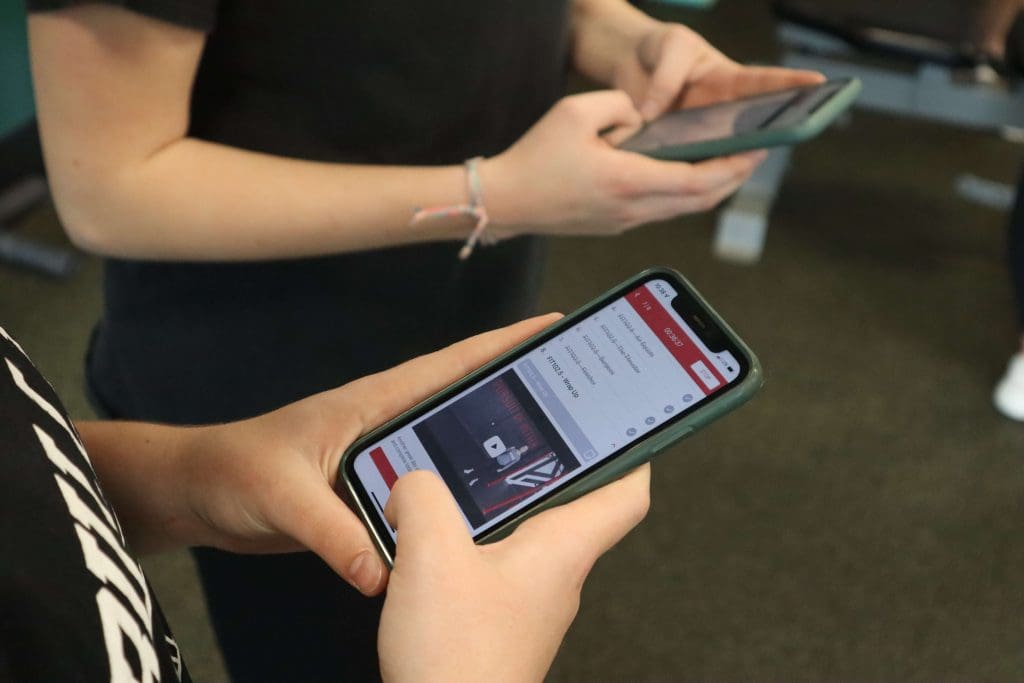
At times over the years, assessments and tests have mistakenly become interchangeable words in the world of education. In this article, we set out to better define assessments in physical education and how they can be utilized to empower student learning and provide better teacher insights. Let’s first start with making sure we set the record straight on our terminology.
>>> Free E-Book: Creating Effective Assessments in PE
Assessment in PE
It is important to note that assessment does not equal testing. Testing implies pass/fail, and this, for our purposes, is useless when it comes to fitness, performance, and physical education. While even here at PLT4M, we still sometimes use the phrase fitness testing , we really mean the idea of formative assessments that allow us to check in on progress and learning.
Assessment in physical education better implies measurement and comparison. Assessment allows us to track qualities like performance abilities, fatigue levels and readiness, general health markers, and understanding of key concepts.
Shape America defines assessment as, “one of the four essential components of physical education — is the gathering of evidence about student achievement and making inferences about student progress based on that evidence.”
Knowing your WHY with PE assessment
Once you have differentiated between testing and assessment, it is time to decide what your point of assessment will be. Basically, why bother? What will the data or information you are collecting via your phys ed assessment be used for?
You (The Physical Education Teacher) – Physical education teachers can utilize assessment as a means of evaluation and validation. Are the lessons and materials in class you are using helping students to learn the concepts? Are workouts or physical activities promoting personal improvement? If your evaluation via assessment says no, you can change and alter your approach. If the assessment helps to communicate yes, you are validating your work and can continue in that direction.
Them (The students) – For many students in physical education, a phys ed assessment can be a reinforcement of hard work through positive results. Students can see progress over time with simple check-ins or fun assessments. It can also help students identify personal strengths and weaknesses, which can help them set goals or strategies for better results.
Someone Else (Administrators, Parents, Etc) – While we wish physical education assessment didn’t have to be a means to justifying the subject, assessment can be a helpful way to showcase the ‘proof’ of what is going on in class. Often teachers can take assessment data and information and highlight key takeaways to showcase what is going on in physical education and its impact on students.
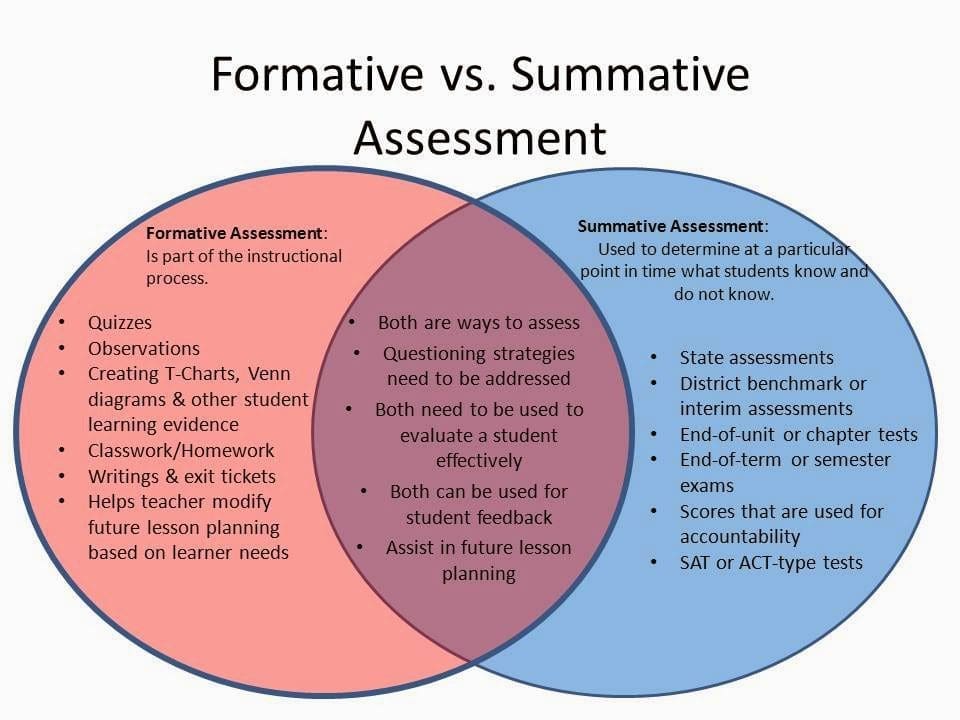
Formative Assessment For Physical Education
The Eberly Center at Carnegie Mellon has a simple way of defining formative assessments :
The goal of formative assessment is to monitor student learning to provide ongoing feedback that can be used by instructors to improve their teaching and by students to improve their learning. More specifically, formative assessments:
- help students identify their strengths and weaknesses and target areas that need work
- help faculty recognize where students are struggling and address problems immediately
In physical education, this can take the shape of many different types of assessments. Examples of formative assessments in physical education can include, but are not limited to,
- Beginning of class open-ended question
- Multiple choice survey
- Physical activity questionnaires
- Exit tickets
- Fitness/Skill Check In
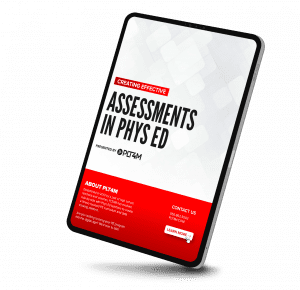
Free Download!
Creating effective assessments in pe.
Looking to create more effective assessments in your PE program? Download our free e-book for strategies on creating effective assessments in PE
Weightlifting Example of Formative Assessment For Physical
At PLT4M, one of our favorite times to use formative assessment in physical education is while doing weightlifting or strength training.
Historically, a summative assessment of a ‘max out’ has been the preferred choice for physical education teachers and coaches. The assessment tasks students to perform a single rep of the heaviest weight possible.
While some students enjoy this ‘max-out’ assessment, it does have its drawbacks. Students could have an ‘off-day’ when it is time to assess, which can lead to an inaccurate reflection of progress. Often PE teachers will conduct this assessment at the beginning and end of the semester, leaving weeks in between where measuring change or progress is not possible.
Worksets As A Formative Assessment In Physical Education
An alternative to maxing out is what we like to call a workset. Worksets are a tool found in our weight-based programs, used to assess students’ maxes and automatically adjust them up or down in increments of 5 lbs, based on their performance.
Based on the result of a given workset, and the rules set in place by PLT4M (or you if you built your own program), the max will auto-update and show kids a corresponding message:
- Great Job: We’ve Increased your max 5 LBs
- Almost: We’re going to keep your max where it is at for another week
- Don’t Sweat it! We are going to take one step back to take two forward. Your max has been adjusted down 5 LBs, but don’t worry, you’ll have plenty of chances to go back up in future weeks.
The benefit to this assessment style is that students can get feedback on a much more regular basis and start to see smaller improvements over time that can keep them engaged and motivated through a semester. Molly Collins, a PE teacher in Michigan, described the advantage of the workset for her physical education students,
“Worksets have made weightlifting more enjoyable for all my students in class. Instead of only the strongest kids feeling like they are improving, everyone can see the weekly feedback and know they are making progress. This is huge for an activity like weightlifting, which can be intimidating!”
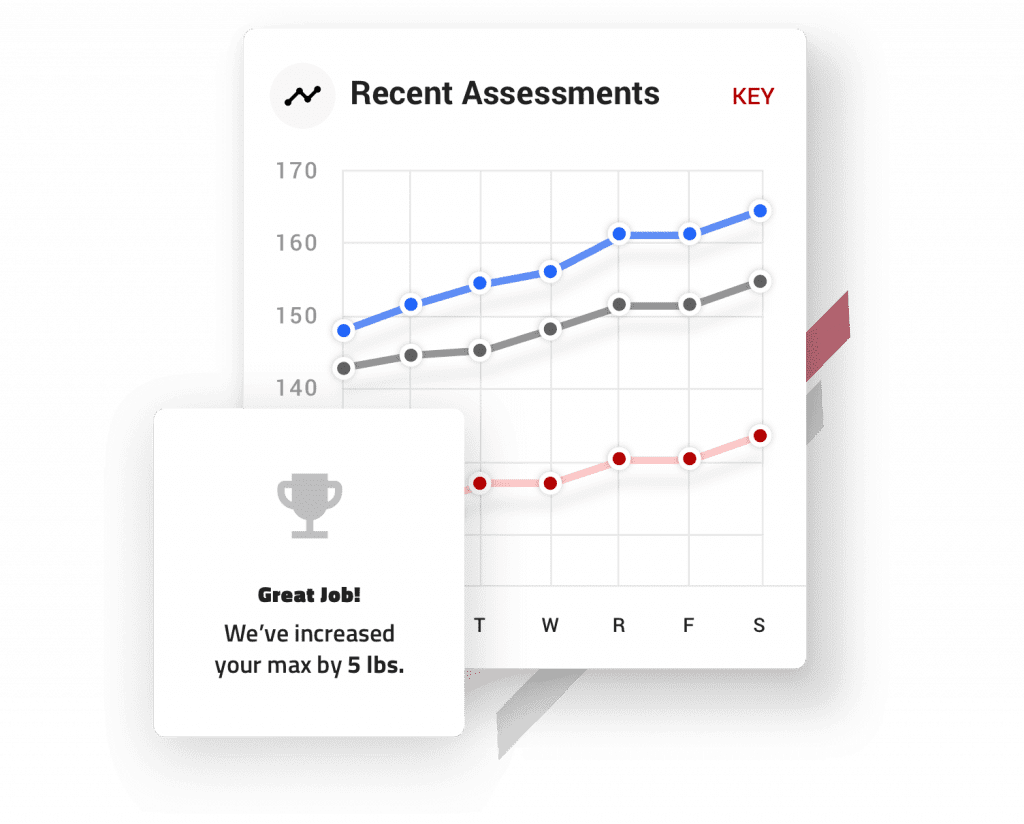
Other Formative Assessment Physical Education Examples
Outside of just weightlifting, PE teachers can utilize a wide variety of fitness-based formative assessment strategies in class. Many PE teachers, because of the district or state requirements, will incorporate assessments like a 1-mile run, 1-minute squat, pacer, and 1-minute push-up test.
The important thing to remember with all of these examples is that students should only be compared to themselves. In the past, a norm assessment has been used to compare and contrast student performance with their peers. The problem with this assessment style is that it can leave students feeling like failures. Let’s use a hypothetical physical activity assessment with a student named Sarah as an example of this.
For example: Sarah ran the mile in 14:00. In a norm assessment she would be told she is in a certain percentile among her peers. Let’s say she was in the 20th percentile. When Sarah improved her mile time to 12:30, while she had a 1:30-minute personal improvement, she may only have moved up to the 25th percentile in her age group. Now Sarah feels as if her progress is not meaningful. This can have unintended consequences and people like Sarah overtime will learn to have a negative association to fitness.
But if we take a formative assessment approach with this mile example, her progress can be celebrated instead of making Sarah feel dejected. We can take that one-minute improvement and highlight that she made significant individual progress. A 10% improvement to be exact! This reframing of assessment and result can now better engage Sarah to continue working towards improvement, rather than disengagement and frustration.
Ready to WOW your Admins?
Schedule a 15-Minute demo to learn how PE teachers are ushering in a new age of Physical Education with Fitness and Technology!
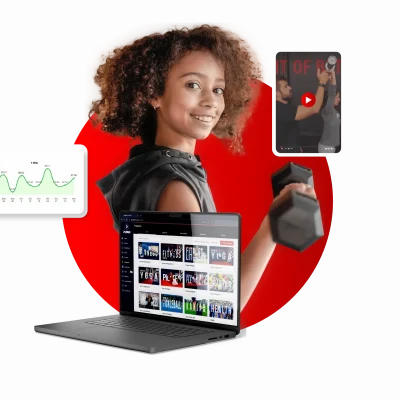
Technology’s Role in PE Assessments
With all of the formative assessment physical education examples, it is important to note that technology in PE can help for a more streamlined assessment process. Collecting data on a regular basis can be a daunting task, but technology can allow for a more efficient and effective way to conduct assessment in PE.
Better yet, the use of technology can help you to achieve a better line of communication and processing of data for all stakeholders. Students can see progress and feedback mapped out over time. Teachers can better evaluate data at both an individual and class level. Administrators can see the top-line information.
Bonus Content! PE teacher Brandon Siegel describes data and assessment at his school!
Key Takeaways on Assessments in Physical Education
When it comes to assessments in physical education, we should take the hypothetical example of Sarah from earlier and consider the larger theme of engagement and motivation. Yes, we want to know if what we are doing within our physical education curriculum is working, but not at the cost of leaving students embarrassed or frustrated.
PE assessments can still give insights needed for teachers while still giving students the confidence that PE and physical activity is a positive in their lives. While you may still need to have a summative assessment for grading, it should not be tied around students’ ability to perform certain activities. Instead, it should consider the larger understanding of key concepts tied to whatever topic you cover.
This concept is not new to physical educators. Over the years, PE teachers have taken great steps to find ways that assessment is a low-stakes check-in that can improve their teachers and engender better student learning. Let’s continue to have open and honest conversations about what assessments in physical education can and should look like!
Have other ideas? Share them in the comments section!
Share this article:
Recent Posts

Physical Education Electives

Stop Bullying Lesson Plans


1 To 1 Devices In Schools – 5 Tips For Physical Education
Interested if plt4m can work at your school.

Is Bullying a topic covered by your wellness curriculum? How do you approach it with your students?

By educating students and being proactive through anti bullying lesson plans, we can work together to prevent bullying.
get.plt4m.com
In an age of rising sport specialization, how can we best serve multi-sport athletes in and out of the gym?

Maximizing Multi-Sport Athlete Success At A Small School
Plainview Junior Senior High School embodies small school pride by placing a big emphasis on the weight room.
Can PE classes make good use of school 1-to-1 devices without taking away from healthy and efficient class activity?

1 To 1 Devices In Schools - 5 Tips For Physical Education
How can physical education take advantage of 1 to 1 devices in schools? We explore 5 tips for technology success in PE.
“From our Intro To PE courses, where we teach foundational movements, to our advanced weight training and athletic development classes, a common thread connects our students to a standards-based approach.”

When The Weight Room Becomes A Classroom
Woodburn High School has made the weight room a classroom with physical education classes empowering student growth and development.
What is the true power of a strength program in High School? “For us, it is about more than just strength gains but putting together the complete picture of development and growth within PE classes.”
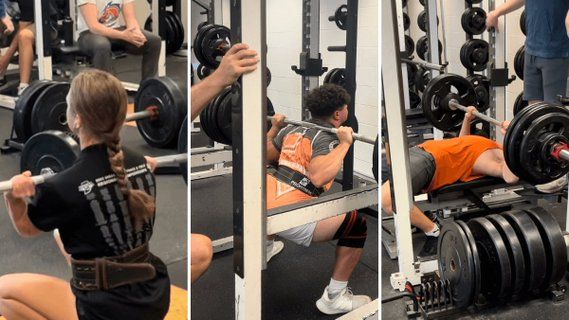
Weight Room Wins - West Noble's Growing Program
West Noble High School in Indiana is winning in the weight room and seeing massive student improvement and progress.
How one school's PE Department has gotten everyone to embrace the importance of wellness through fitness. From phys ed classes, to athletic teams, to the staff themselves - everyone is getting active!
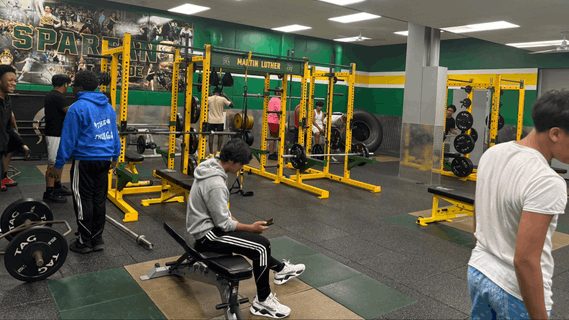
Fitness For All - Student, Staff, & School Wellness
Martin Luther High School sets the standards for what a comprehensive school wellness program can look like across PE and Athletics.

Understanding Assessment in Physical Education: Strategies, Examples and Best Practices
Physical education plays a vital role in the holistic development of students. It offers numerous benefits, including promoting physical fitness, enhancing motor skills, and instilling a lifelong appreciation for physical activity. However, the true potential of physical education is often overshadowed by the perceived difficulty of assessing student learning and achievement in this context. The aim of this article is to demystify the concept of assessment in physical education and provide PE teachers with comprehensive strategies to ensure student progress and enhance teaching practices.

As the field of education continues to evolve, so too must the methodologies applied in the classroom, including those in the gymnasium or on the sports field. Traditionally, physical education assessment was focused on the more easily quantifiable aspects of fitness levels and specific skills. But a more comprehensive approach incorporates diverse assessment methods that not only evaluate physical abilities but also account for personal improvement, student understanding, and knowledge of physical activities.
Understanding the Role of Assessment in Physical Education
Assessment in PE is crucial for gauging student progress, refining curriculum, and enhancing teaching strategies. It provides a reliable way to measure the development of specific skills, including motor abilities, knowledge, and understanding of various physical activities, and the personal and social growth that accompanies participation in physical education class. Consequently, physical education assessments offer invaluable data to teachers, students, and parents about student achievement, forming the basis for setting new goals, providing feedback, and making inferences about future instruction.

The role of assessment is not limited to the measurement of the students' physical abilities. It extends to the evaluation of cognitive growth, understanding of the rules and strategies of specific sports, and development of teamwork, leadership, and ethical behavior. Moreover, assessment in physical education plays a critical role in promoting students' self-evaluation skills, encouraging them to take responsibility for their learning.
Utilizing Rubrics in Physical Education Assessment
Rubrics serve as essential tools for PE teachers

when conducting assessments. These established scoring criteria help to evaluate a student's performance in an organized, consistent, and objective manner. They offer clarity about what is expected of students, providing them with specific performance expectations and a clearer understanding of what constitutes success.
Well-constructed rubrics detail varying levels of proficiency for each learning objective, allowing teachers to pinpoint where a student is excelling and where improvement is needed. Additionally, rubrics facilitate constructive feedback, enabling students to understand their strengths and weaknesses better. They also promote consistency in evaluation and make the
assessment process transparent, promoting student understanding and fairness.
Formative Assessment in Physical Education
Formative assessment, also known as assessment for learning, is an ongoing process that occurs during instruction. It allows teachers to monitor student learning, provide feedback, and adjust instructional strategies to enhance student achievement. In the context of physical education, formative assessments can include peer assessment, self-assessment, exit assessment slips, and exit checks.
Peer assessment: Peer assessment encourages students to constructively critique each other's performance. It promotes the development of communication skills and a better understanding of the learning objectives. This form of assessment can be particularly effective in team sports and group physical activities, where students can give and receive feedback about specific skills or teamwork strategies.

Self-assessment: Self-assessment promotes self-reflection and personal improvement. Students assess their own performance, identify their strengths and weaknesses, and set goals for improvement. This formative assessment method fosters a sense of responsibility and accountability for one's own learning and progress.

Exit assessment slips: These are quick assessments at the end of a lesson where students write what they learned, questions they might have, or difficulties they experienced. They help teachers understand the effectiveness of the lesson and provide insight into students' understanding.

Exit checks: These quick checks at the end of class assess student understanding of the day's lesson. Students can point to or touch a visual on the way out of class to self-assess their performance for the day.

Looking to enhance your physical education program with targeted professional development? Visit PEWorkshops.com to explore onsite and virtual workshops from Mark Manross Consulting, customized to meet the unique needs of PE teachers.
Summative Assessment in Physical Education
While formative assessments focus on ongoing feedback during the learning process, summative assessments occur at the end of a unit, semester, or school year. They provide an overall measure of student learning and achievement. Examples of summative assessments in physical education include fitness tests, skill performance assessments, written assessments, or team sport participation.

Summative assessments are useful for making inferences about student achievement over time and their readiness for the next level of physical education. They also help physical education teachers report student progress to parents and school administrators.

Authentic Assessment in Physical Education

Authentic assessment in physical education refers to evaluating students in situations that replicate real-world activities rather than contrived testing scenarios. For example, rather than simply testing a student's ability to kick a soccer ball, an authentic assessment would involve evaluating the student's performance during an actual game, taking into account their skill execution, decision-making, and teamwork.
Authentic assessment offers a comprehensive view of a student's abilities. It values the learning process, rewards meaningful learning, and mirrors the kind of work students are likely to encounter outside of the school environment.
Utilizing Assessment Data in Physical Education
Assessment data from a PE class serves as valuable resource for a physical education teacher. The data offers insights into students' physical abilities, understanding of PE concepts, and progress in various skills and objectives. By evaluating this data, teachers can identify trends, spot challenges, and tailor their instruction to better meet students' needs.

For instance, if PE assessment data show that many students struggle with a specific skill, the teacher might revisit that skill in subsequent lessons, provide additional practice opportunities, or adapt their teaching strategies to improve student understanding and performance. Furthermore, assessment data can also help professionals teaching physical education communicate more effectively with parents about their child's progress and learning needs in PE.
The Four Essential Components of Physical Education Assessment
There are four essential components to effective physical education assessment:

1 - Ongoing evaluation: Assessing student performance and progress should be a regular part of the physical education class. Consistent evaluation provides timely feedback to students and informs instruction.
2 - Diverse assessment methods: Utilizing a mix of formative, summative, and authentic assessments ensures a comprehensive evaluation of student learning.

3 - Student involvement: Engaging students in the assessment process through peer and self-assessment encourages active participation in their learning journey.
4 - Data-informed decision-making: Utilizing assessment data to inform teaching strategies and learning objectives ensures that physical education is responsive and tailored to students' needs.
Final Thoughts
Physical education plays a critical role in student development, promoting physical fitness, motor skills, and a love for physical activity. However, to fully realize its benefits, a comprehensive and effective assessment strategy is necessary. Through a combination of rubrics, formative, summative, and authentic assessments, physical educators can track student progress, adapt their teaching strategies, and enhance student learning.

Assessment in physical education is not just about evaluating student performance but is an essential tool for improving teaching practices and promoting student achievement. It allows teachers to create a learning environment that meets students' unique needs, encourages personal growth, and prepares them for a lifetime of physical activity.

As we move forward, we must embrace a broader vision of assessment in physical education—one that views each student holistically, values their personal improvement, and uses assessment data to continually enhance the quality of physical education.
How do you assess your students (formative and summative) during PE? Let us know in the comments below?
FREE Assessment Rubric Visual for Your Learning Space!
Do you need a practical rubric visual to help you highlight and showcase how you assess your PE students for a skill, movement or concept? If so, Cap'n Pete's Power PE has you covered! This FREE colorful Physical Education visual (poster) displays an Olympic-themed, 4-point grading rubric that can be utilized by teachers during student assessment in physical education. It can also be informative for students during PE skill self-assessment and by their classmates through peer-assessment.

Fill out the form below to download the physical education rubric visual that you can use to reference when assessing your students. PE Poster: 4 Point Rubric- Olympic Themed (Go for the Gold) - in 5 color schemes displays the 3 Olympic medals as motivation to improve PE assessment scores and provides a descriptor statement and graphical icons to help students easily relate to each score point.
This freebie set will be sure to enhance your PE program for years!
Need Some Easy to Implement Resources to Help Assess Physed Skills & Movements?
Download 24 practical assessment sets for several skill and movement actions for physical education students from 2nd to 8th Grade! The PE Assessment Series: Super Bundle: 24 Skill and Movement Assessment Sets is a comprehensive bundle of teacher, peer and self-assessment visuals teachers and students can easily use for formative and summative assessment in a PE setting.

You can download the bundle (or individual resources) from either of the following platforms: Cap'n Pete's Power PE Website or Teachers Pay Teachers- Cap'n Pete's TPT Store
Each assessment format can be used by a physical education teacher for formative or summative assessment purposes. The different sheets share the same visuals, element descriptors and basic rubric system. The teacher versions (Pre/Post-test and Single test variation) allow for scoring to be conducted by the teacher while the peer and self-reflection versions provide an area for student reflection.
What Skills and Movements are included in the PE Assessment Series Super Bundle?
PE Assessment Series: Bundle 1
1. Catching a Ball
2. Hand Dribbling
3. Overhand Throw
4. Throwing a Football
5. Underhand Roll
6. Underhand Toss
PE Assessment Series: Bundle 2
7. Foot Dribbling
8. Forehand Strike ️
9. Hockey Stick Handling
10. Kicking a Ball
11. Punting a Ball
12. Striking with a Bat
PE Assessment Series: Bundle 3
13. Forward Roll
14. Jumping Rope
15. Overhand Volley
17. Twirling a Hula Hoop
18. Underhand Volley
PE Assessment Series: Bundle 4
19. Galloping
20. Leaping
21. One Foot Hopping
22. Skipping
23. Slide Stepping
24. Two Foot Jumping

- PE Assessment
- Professional Growth
Related Posts
Understanding the New SHAPE America Physical Education Standards for 2024
PE Stations: 15 Fun Ideas for Active Engagement in Elementary Physical Education Classes
Exploring the Role of AI in Physical Education: Enhancing Efficiency and Effectiveness in Teaching PE
Recent Posts

How to Design an Engaging and Effective Elementary PE Curriculum

Physical Education and Childhood Obesity: Empowering a Healthier Generation

18 Top PE Activities for Dynamic Physical Education Classes

Mastering the Dynamics of PE Classroom Management: A Comprehensive Guide
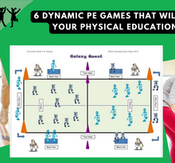
PE Games for Elementary Students: 6 Dynamic Physical Education Games to Transform Your Classes

Run, Walk, Thrive: How to Implement a Mileage Club at Your School

Physical Education Advocacy Amplified: Elevating Your Voice

Energizing Education: The Power of Brain Breaks in the Classroom; Includes 12 Practical Activities

Engaging At-Home PE Activities for Effective Distance Learning in Physical Education

Adopt-a-Gym: Enhancing Physical Education for Underfunded Schools

Best Physical Education Equipment Providers 2024: Your Complete Resource

Cultivating Positive Character Traits for Students in Physical Education: Shaping Tomorrow's Leaders

IMAGES
VIDEO